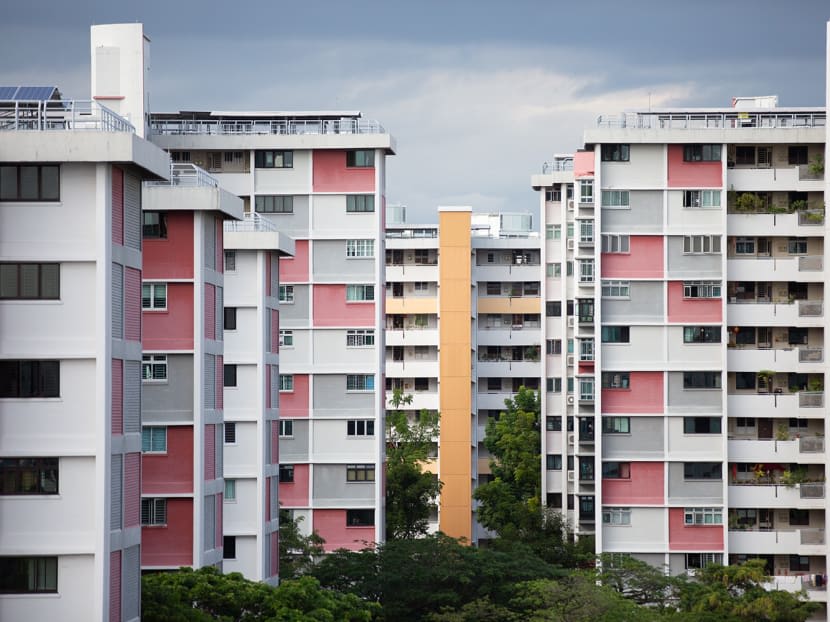Experts say 'mature', 'non-mature' HDB estate categories could go after review; new 'semi-mature' label also possible
SINGAPORE — The terms "mature" and "non-mature" public housing estates could be replaced after a newly announced review of these classifications. Another possibility is that a third category of "semi-mature" or "emerging" estates could be added, housing experts said.

National Development Minister Desmond Lee said that the classification of mature and non-mature public housing estates is being reviewed by his ministry.
- Housing experts said that a review of the classification of "mature" and "non-mature" estates could result in one of three possible outcomes
- One is the introduction of a new “semi-mature estate” or "emerging estate" category
- Another is that the existing classifications may be replaced by new ones based on geographical location
- The experts also said that if the review reclassifies some non-mature estates as mature estates, it could drive up demand and housing prices in that area
SINGAPORE — The terms "mature" and "non-mature" public housing estates could be replaced after a newly announced review of these classifications. Another possibility is that a third category of "semi-mature" or "emerging" estates could be added, housing experts said.
If the terms are replaced, these analysts see two alternatives: New classifications based on geographical location or based on proximity to flats built under the Prime Location Public Housing (PLH) model.
The PLH model was introduced last year to ensure that HDB flats in prime and central locations remain affordable and accessible to Singaporeans.
Yet another option is to use population density as the basis for classification, the housing analysts said.
National Development Minister Desmond Lee said on Sunday (Nov 20) that the classification of mature and non-mature estates is being reviewed by his ministry.
Estates and towns deemed to be mature "are usually those with limited land for public housing development", MND said in a written response to a parliamentary question in 2017.
On the other hand, non-mature estates and towns are those "where there is more land available for public housing development", it added back then.
In his comments on Sunday, Mr Lee said that the review was necessary because the distinction between mature and non-mature estates had become less relevant over time since the amenities at some non-mature estates today could be comparable to those in mature estates.The move to revisit these classifications came in the midst of rising concerns from some young adults who have been unsuccessful in bidding for Build-To-Order flats despite multiple attempts.
TODAY spoke to housing experts to find out the possible outcomes of the review, and their implications for homebuyers.
WILL 'MATURE' AND 'NON-MATURE' CLASSIFICATIONS SURVIVE THE REVIEW?
Several experts agreed that a third category called "emerging estates" or "semi-mature estates" is a possibility.
Mr Pow Ying Khuan, head of research at real estate technology company 99.co, said: “Emerging estates like Sengkang, Punggol and Jurong East are estates that are not so central, but they have developed good amenities over the years.”
“Emerging estates like Sengkang, Punggol and Jurong East are estates that are not so central, but they have developed good amenities over the years.Mr Pow Ying Khuan, head of research at real estate technology firm 99.co”
Mr Ong Kah Seng, an independent property analyst, said that a new “semi-mature” estate categorisation could be possible since some estates are quite developed, though not as much as mature estates.
Mr Lee Sze Teck, senior director and head of research at real estate firm Huttons Asia, agreed that an “emerging estate” classification could be added, and may also include the new towns of Tengah and Bidadari.
Mr Pow and Ms Christine Sun, senior vice-president of research and analytics at real estate firm OrangeTee & Tie, both suggested that using geographical location instead of land availability may be another way of classifying estates.
Mr Pow said that housing estates could be divided into four groups based on these general locations:
- The Greater Southern Waterfront
- The city fringes such as Geylang, Bukit Timah, Clementi, Bukit Merah and, to some extent, Bishan
- The east and northeast
- The north and west
Mr Mohan Sandrasegeran, senior analyst, research and content creation at real estate agency One Global Group, said that the population density in a particular estate or sub-zone of an estate could be used to determine whether an area was developed or not.
Another expert, Mr Chris Koh, founder of real estate agency Chris International, said that the classification of mature and non-mature estates could be removed, because the distinction between these two types of estates has become unclear.
Instead, homebuyers could rely on either the PLH or non-PLH classification, which is more useful in informing prospective buyers about the proximity of homes to amenities such as public transportation and shopping centres, and proximity to the city centre.
Mr Koh also said that the review was necessary to clear up confusion, and to change the misconception prevalent among some homebuyers that a clear-cut distinction exists between mature and non-mature estates in terms of development and other issues.
"There is a wrong perception or confusion that housing in mature estates is more expensive than in non-mature estates, which may not be true.
This is because non-mature estates could also have close proximity to good amenities, which is what house prices are based on,” he added.
IMPACT ON PRICES, HOUSING MARKET
If the review changes the status of any given non-mature estate to mature, homebuyers could change their perspectives on these estates, leading to more demand and higher prices, Mr Lee Sze Teck from Huttons Asia said.
Mr Sandrasegeran from One Global Group and Mr Pow from 99.co also agreed that this is a possibility, but added that the change would be gradual.
“A broad-based price growth would continue to take place in the overall market," Mr Pow said.
"But as perception changes and more non-mature estates get connected to major transport nodes with more amenities developed, it is possible that the price gap between mature estates and some non-mature estates could narrow in the future,” he added.
However, Mr Nicholas Mak, head of research and consultancy at ERA Real Estate, said that reclassifying non-mature estates as mature estates may not affect flat prices in that area.
“It is quite unlikely that prices of those estates would change, just like the price of a house doesn’t increase just because the name of the road is changed from Avenue 5 to Avenue 6.”
Mr Koh from Chris International said the same thing, that housing prices are pegged to the proximity and availability of amenities, not whether it is located in a mature or non-mature estate.
Both he and Mr Mak also said that if more non-mature estates are reclassified to semi-mature or mature, this could possibly reduce the availability of flats for singles.
Singles can buy a flat only after turning 35. They are allowed to buy only two-room flexi flats in non-mature estates if they are buying new flats, but they can buy any flat type if getting a resale flat.








